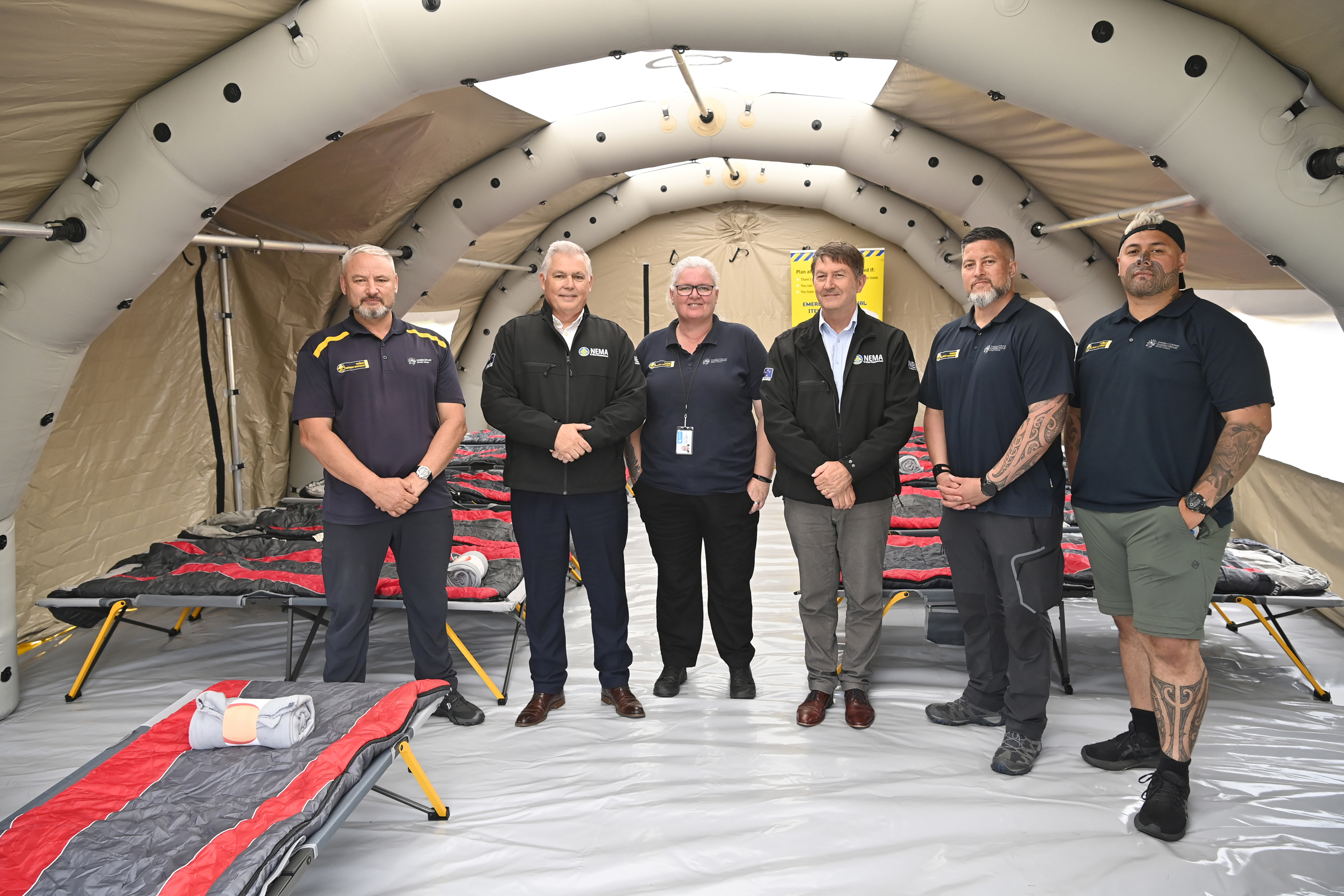Friday 1 December, 2023
Tairāwhiti Emergency Management's efforts to ensure remote communities are able to survive after a catastrophic event got the gold star of approval today from newly-minted Minister for Emergency Management and Recovery Mark Mitchell.
Mr Mitchell, who has close family ties to Gisborne and was a Police dog handler here for eight years, made his first Ministerial visit to the region to see how well prepared we are in the event of an earthquake and subsequent tsunami.
The project has been two years in the making and will see 19 communities equiped with kits that include water treatment units that can treat both salt water from the sea or compromised water sources, mass first aid kits and hybrid solar energy units, among other things.
The contents are on display at the Rose Gardens beside Gisborne District Council, and will be on display again tomorrow from 9am to 1pm.
It’s about reassuring communities their safety and wellbeing are at the heart of Emergency Management.
Today was the first time the community has had a chance to see first hand what will be packed inside each of the 19 shipping containers, which are on their way to isolated rural and coastal communities over the next few weeks.
Minister Mitchell flew in from Wellington to see the display for himself and hear the plans in place for isolated pockets of Tairāwhiti.
Mr Mitchell, who also visited the new Tairāwhiti Emergency Management office in Potae Ave, says he’s impressed with how well prepared this region is.
“This initiative to protect isolated communities is of a gold standard. It leads the way and sets the standard for others to reach in our country.
“Gisborne and the Coast are very isolated, yet these containers can provide clean water, medical support, shelter and food to those cut off after an emergency event.
“Tairāwhiti has an outstanding leader with Ben Green.”
Incoming National MP Dana Kirkpatrick says it’s important to have Mr Mitchell here to see and understand for himself the challenges this region faces.
Initiated by Tairāwhiti Emergency Management manager Ben Green, the shipping containers will be delivered to communities soon.
“It’s essential for everyone to know where the containers are, and how to use the equipment,” says Mr Green.
In each container is an Air Shelter Covertex tent that takes around four people half an hour to put up,
There is also a water purification kit, which can turn muddy river water, or salty sea water, into clean drinking water at a rate of four litres a minute.
Air Shelter tents with camp stretchers and bedding are also inside to be used either as triage centres for the injured or shelters.
Ikaroa-Rawhiti MP Cushla Tangaere-Manuel lives in one of the communities that was cut off during Cyclone Gabrielle.
“Having these resources to be able to look after ourselves if Ben and his team can’t get to us – it’s amazing.
“We’re really excited to be having these resources on the ground soon for home. It’s a fabulous initiative.”
The Tairāwhiti Marae Resilience and Emergency Preparedness Project received funding from Te Puni Kōkiri ‘Kainga Rua’ funding initiative supporting the first phase of the project with Phases Two and Three being covered by Toitū Tairāwhiti (iwi collective that includes Ngāti Porou, Ngāi Tāmanuhiri, Rongowhakaata and Te Rūnanga o Tūranganui-ā-Kiwa).
The project team also includes Fire and Emergency NZ (FENZ), NZ Police and St John and NZ Red Cross to reflect the combined emergency approach in the event a State of Emergency is declared.
From left below are: Tairāwhiti Emergency Management Manager Ben Green, Minister for Emergency Management and Recovery Mark Mitchell, Tairāwhiti Emergency Management - Welfare - Dallas Haynes, NEMA CEO Dave Gawn, Tairāwhiti Emergency Management - Operations - Marcus Tibble, Tairāwhiti Emergency Management - Intelligence - Kumeroa Papuni-Tuhaka. Picture by Gisborne Herald

Two bottles of water that both contain water straight from the Taruheru River. Once has been cleaned through a solar powered and /or battery-operated water purification kit – which each shipping container will have one of to sustain communities that have been cut off after a long or strong earthquake and subsequent tsunami.

